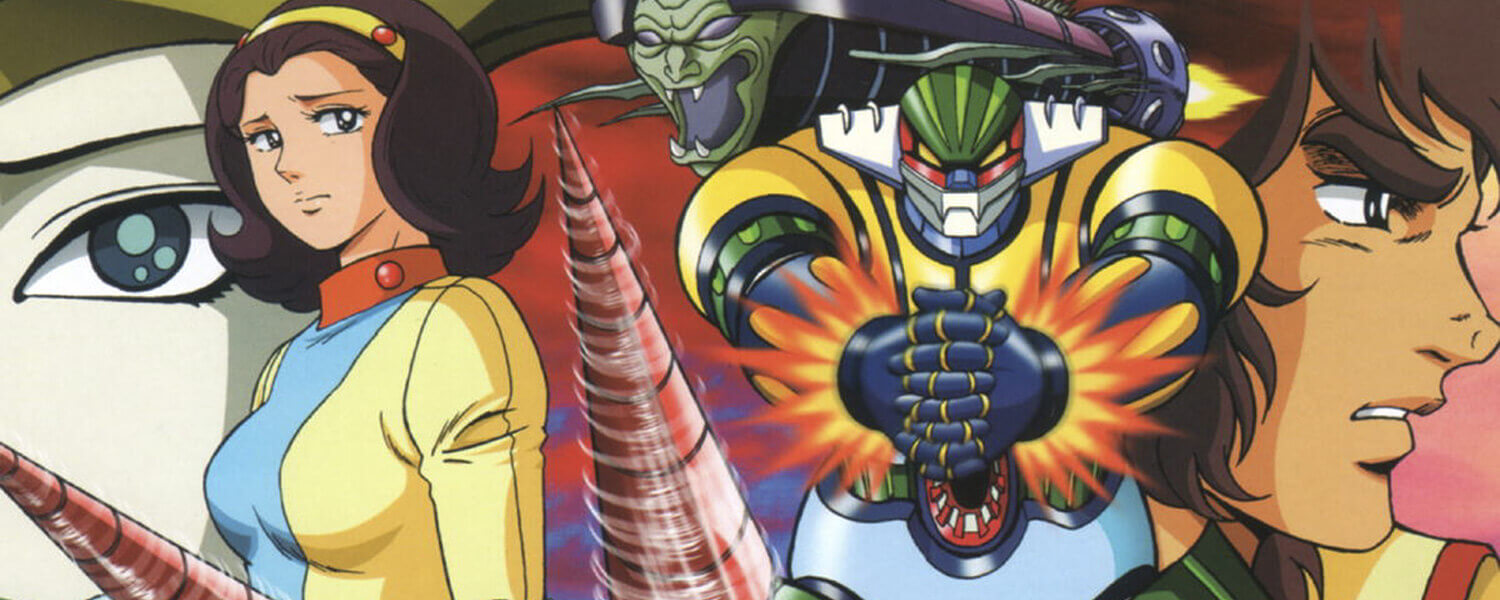CHANGE CYBORG!
Sorry, I could not help myself there. Kotetsu Jeeg (鋼鉄ジーグ Kōtetsu Jīgu or translated as Steel Jeeg) is one of my favorite super robots from my childhood. If you are trying to guess my age, I will have you know I watched the show long after its initial release.
Story
Kotetsu Jeeg is the story of Hiroshi Shiba and his struggles in preventing evil Queen Himika of the Jamatai Kingdom from taking over the Earth. Hiroshi was a car racer who died due to a laboratory accident but was restored to life by his father, Professor Shiba. The professor also rediscovered the remnants of the ancient Jamatai Kingdom and a powerful ancient relic: a tiny bronze bell.
Some years after that, Prof. Shiba was murdered by the revived Queen Himika’s henchmen. Hiroshi learned that his father has been preparing for just such a moment. Hiroshi had been re-made into a transforming cyborg, with the powerful bronze bell hidden in Hiroshi’s chest. The professor had also created myriads of robot parts to fight against Himika’s Haniwa Phantoms. Oh, and the professor found a way to upload his brain into a super computer before he was murdered.
In a pinch, Hiroshi can transform himself into his cyborg form, powered by the bronze bell. He can also further transform into the head of Kotetsu Jeeg. Miwa Uzuki, Hiroshi’s love interest and sidekick, will then shoot out Jeeg Parts (chest, hip, arm and leg segments, hands, and feet). The parts will assemble as the super robot known as Kotetsu Jeeg as shown in the video above at the 0:46 mark. Later, Hiroshi can also transform into a more powerful version of his cyborg form for when he needs to fend for himself before transforming into Jeeg.
Jeeg‘s History and Go Nagai
Jeeg would not have made it to the screens and prints if not for the father of the Super Robot genre himself, Go Nagai (永井 豪 Nagai Gō). Nagai, born Kiyoshi Nagai (永井潔 Nagai Kiyoshi), has created a vast number of works since the 60s. Nagai’s bibliography on Wikipedia, which you can access here, has a very long list of works by or credited to him.
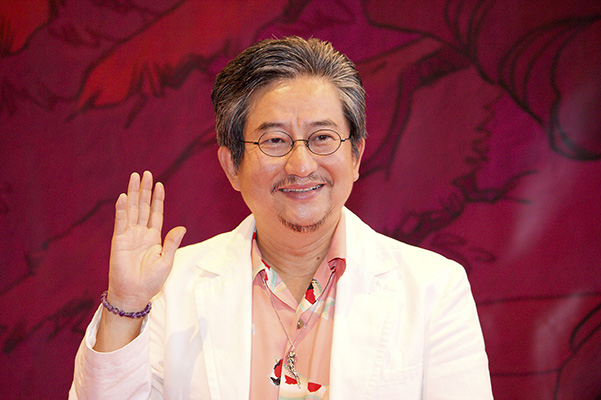
Jeeg started out as a manga series in August 1975 before being adapted into an animated series in October of the same year.
Among his most famous creations are: the Getter Robo series, Mao Dante, Devilman, Mazinger Z, and Cutie Honey. Since Cutie Honey can be considered a precursor to the Magical Girls genre, Nagai can arguably be credited as a catalyst of that genre as well. Of course, many of the robots created are fairly gigantic, so you can also thank him for creating the giant robot subgenre as well (like GunBuster, RahXephon, Zone of the Enders, Xenogears, and obviously, Tengen Toppa Gurren Lagann).
In comparison to Nagai’s other works, such as, Getter Robo (38 meters or about 124 feet), Grendizer (30 meters or almost 100 feet), and Mazinger (18 meters or 59 feet), Jeeg is one of the shorter robots (about 10 meters or 30-ish feet tall).
In the early days, Nagai was prominent and notorious for using many tabooed subjects such as sex, eroticism, violence, dystopia, and religious motifs.
As the first to use erotic themes in his works, Nagai broke the shell for the subsequent manga artists and titles. Some suggest that his earlier works are considered tame by today’s standard.
Koutetsu Jeeg‘s Legacy
In around 2005, there was a resurgence of interest for the super robot genre. As such, a new series based on the original was created in 2007: Kotetsushin Jeeg (鋼鉄神ジーグ Kōtetsushin Jīgu translated as Steel God Jeeg).
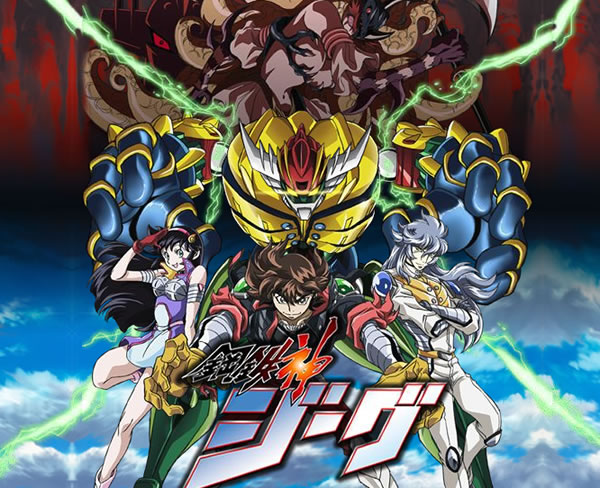
The new series is about a new generation of warriors fighting against the yet again revived Yamatai Kingdom and its evil Queen Himika. It stars Kenji Kusanagi, a motorcycle racer and martial artist, Tsubaki Tamashiro, the granddaughter of Miwa, and Kyo Misumi, a childhood friend who is very mysterious and harbors interesting secrets related to Jeeg’s power. There are some details from the first series that were retconned in Koutetsushin Jeeg.
Koutetsushin Jeeg is a series that pays homage to the old one and rewards the older fans of the original. I personally like the thirteen-episode series very much.
Yamatai Kingdom
Here is where things get interesting. Jamatai Kingdom in the Jeeg series is most probably the reference to the historical (almost mythical) Yamatai Kingdom (邪馬台国 Yama-taikoku) in Japanese history. At one period during the history of the kingdom, it was ruled by the legendary queen and priestess Himiko (also known as Pimiko). By now you may have guessed that the evil Queen Himika is a play on priestess Himiko’s name.
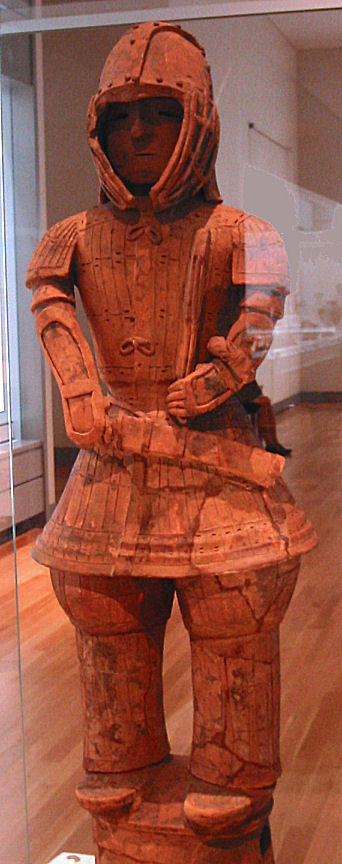
The reference does not stop there either. The Haniwa Phantoms refers to the haniwa clay sculptures that were dated to around third to sixth century AD. Himiko’s reign has been theorized to be around the first half of the third century. Scholars refer to the timeframe as a transitional period between the Yayoi (300BC-300AD) period and the Kofun (250-538AD) period.
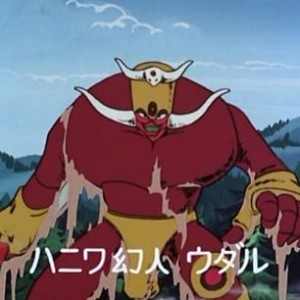
Many details about the kingdom have been debated by the experts. One of the biggest mysteries thus far is the exact location of Yamatai. There are also many records from the surrounding kingdoms such as texts from Eastern Han dynasty, Wei kingdom, and Sui dynasty from the Mainland China that verified the existence of Yamatai. Some of the text even offered directions recorded by the envoys from the Mainland to the Wa (from Chinese 倭 Wō) Kingdom, a name bestowed by the Chinese and Korean delegates then.
As for the locations, some scholars have placed the kingdom at many different places including, Okinawa, northern Kyushu, or even central Honshu.
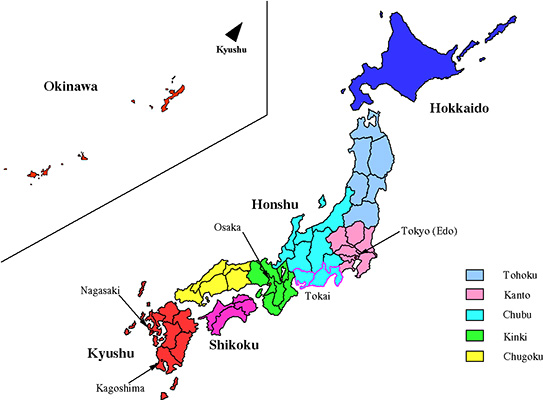
However, a recent discovery in 2009 proposed a new location for Queen Himiko’s palace: Nara. The Japan Times has a short article about the finding that you can read here.
Unlike the evil Queen Himika from Kotetsu Jeeg, queen-priestess Himiko was stated to be a great ruler. During her regime of 50-60 years (quite a long time), Himiko was respected by the neighboring countries, including the Mainland. The Chinese Wei Dynasty conferred the title “Queen of Wa Friendly to Wei” to Himiko. Queen Himiko also received many gifts representing the highest status symbols such as ceremonial bronze mirrors.
For more about Queen Himiko, head over to Tofugu by clicking here. Tofugu has a great write up on Queen Himiko’s history, legacy, and different depictions in the modern culture.
KWEH! That is all we have for this week’s #ThrowbackThursday. Come back next week for another epi…, I mean, article!
Sources: Tofugu, Wikipedia (Kotetsu Jeeg, Go Nagai, Haniwa, Yamatai Kingdom), and TV Tropes.

Featured Sponsor - JAST
The sweetest romance and the darkest corruption, the biggest titles and the indie darlings; for visual novels and eroge, there's nowhere better.
Big thank you to our supporters
From their continous support, we are able to pay our team for their time and hard work on the site.
We have a Thank-You page dedicated to those who help us continue the work that we’ve been doing.
See our thank you page